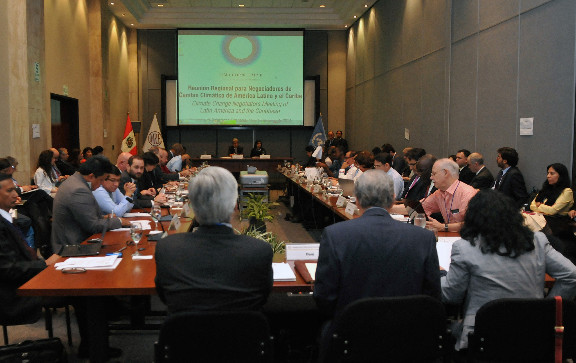 COP20 in Lima, courtesy of the Ministry of Exterior Relations, via Flickr.
COP20 in Lima, courtesy of the Ministry of Exterior Relations, via Flickr.
The Progress and Uncertainty of the Agreement at Lima
COP20 in Lima produced a landmark consensus for climate change, acknowledging that developing countries as well as developed ones are responsible for undertaking commitments to combat the rise of greenhouse gases. Furthermore, the discussions in Lima were designed to establish a more durable agreement than previous ones, allowing participating states more flexibility in defining what commitments they will undertake without being pigeonholed into agreements which they may not be able to fulfill. The Lima conference marks a significant shift in the thinking of the global community to move away from commitments which are well defined and strictly enforceable to more ambiguity and inclusivity, focusing on global cooperation rather than burdening developed states that are seen as responsible for climate change. The agreement is also significant since both China and the United States were able to come together to agree to reduce emissions, and this is largely due to China’s realization that it cannot maintain its high level of pollution, which is quickly becoming a serious health risk for its population. The conference at Lima sets the stage for COP21 in Paris, which hopefully will produce a new protocol. Such an agreement would be the first large multilateral agreement focused on climate change which has committed parties from both developed and developing nations.
Another key achievement for the conference at Lima is that it was focused on emphasizing the need to improve transparency in calculating emissions, as well as having clear objectives on what states plan to achieve, and how they aim to achieve them. Traditionally an issue with the Kyoto Protocol has been a lack of this transparency, so the actual level of success or failure has been difficult to determine. With the agreements from Lima, this is unlikely to be an issue for the future.
Despite all of the progress that was achieved at Lima, there are still a number of concerns. While the agreed upon terms are very inclusive and durable, they are also very ambiguous. There is no established common time frame for states to meet their commitments, the question of how differentiated the responsibilities should be among states has not been addressed, how much of a state’s commitments should be determined by the international community as opposed to domestically, how future agreements should be enforced, how commitments will be financed, and how commitments and parties will be defined in the future climate agreement are still to be determined. All of this creates a situation of great uncertainty for the upcoming conference in Paris. Until hard commitments are defined at COP21, all the Lima conference shows is that a large number of parties have agreed that addressing climate change will require a greater level of commitment and global cooperation than what exists currently.







[…] that obligations be low enough that a large number of states are still able to participate. The Progress and Uncertainty of the Agreement at Lima Philip Rossetti The Lima conference marks a significant shift in the thinking of the global […]